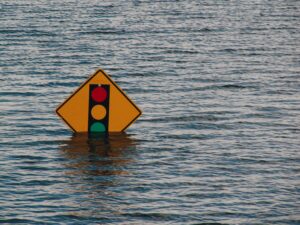Protecting Yourself From Holiday Theft
 The holiday season brings joy, cheer, and a sense of togetherness. Unfortunately, it also attracts increased incidents of theft, making it crucial for individuals to take proactive measures to protect themselves. As you stroll through your neighborhood during this festive time, it’s not uncommon to spot numerous holiday deliveries left unattended on porches, making unsuspecting homeowners vulnerable targets. Safeguarding yourself from holiday theft requires a strong emphasis on prevention. Here are some valuable tips to help you avoid falling victim to theft during this season of giving:
The holiday season brings joy, cheer, and a sense of togetherness. Unfortunately, it also attracts increased incidents of theft, making it crucial for individuals to take proactive measures to protect themselves. As you stroll through your neighborhood during this festive time, it’s not uncommon to spot numerous holiday deliveries left unattended on porches, making unsuspecting homeowners vulnerable targets. Safeguarding yourself from holiday theft requires a strong emphasis on prevention. Here are some valuable tips to help you avoid falling victim to theft during this season of giving:
- Alter Delivery Locations: Consider having your deliveries sent to your workplace if permitted. This ensures that you or a trusted colleague can receive the packages in person, reducing the risk of them being left unattended at your doorstep.
- In-Person Pickup: For valuable shipments, request that the shipper holds the package for in-person pickup. Many reputable shipping companies now offer convenient apps to streamline this process, allowing you to retrieve your items directly from their facilities.
- Explore Additional Shipping Options: Some shipping companies, like Amazon, have introduced innovative solutions such as “lockers.” These lockers provide a secure location where your shipment can be placed, and you receive a unique code to access it at your convenience.
- Leverage Family Support: If you have retired relatives living nearby, consider having packages delivered to their homes. This not only reduces the risk of theft but also presents an excellent opportunity to spend quality time with loved ones during the holiday season.
- Stay Informed: Sign up for delivery notifications from the shipping companies. They often offer email notifications, and some carriers even provide text message alerts, keeping you informed about the progress of your deliveries and ensuring that you can take appropriate action upon their arrival.
- Embrace Home Surveillance: Installing a home surveillance system that focuses on the area where your packages are typically delivered can provide an extra layer of protection. While this may be a pricier alternative, it grants you peace of mind, particularly when you cannot be present to monitor your home personally.
- Engage with Neighbors: Foster a sense of community by discussing the issue of theft with your neighbors. Encourage each other to be vigilant and keep an eye out for unfamiliar vehicles or suspicious activity in the vicinity. By working together, you can enhance the security of your neighborhood during the holiday season.
While enjoying the holiday season is undoubtedly a priority, safeguarding your possessions and personal belongings from theft should not be overlooked. By implementing these preventative measures, you can minimize the risk of falling prey to criminal activity and ensure that your holiday season remains joyful and stress-free.
Remember, prevention is key. By adopting these proactive strategies, we hope that your holiday season is filled with warmth, happiness, and a sense of security.



 Home security is essential, even if you’re on a tight budget. While monthly bills can be overwhelming, it’s crucial to prioritize the safety of your home and belongings. Thankfully, modern security companies offer affordable options to protect your home. Consider these cost-effective, tech-savvy solutions for home security:
Home security is essential, even if you’re on a tight budget. While monthly bills can be overwhelming, it’s crucial to prioritize the safety of your home and belongings. Thankfully, modern security companies offer affordable options to protect your home. Consider these cost-effective, tech-savvy solutions for home security:
 Floods can strike anywhere in the United States, as evidenced by FEMA’s data showing flood claims occurring in every state, with an average claim cost exceeding $31,000. It’s a common misconception that only properties situated near streams, rivers, or bodies of water are at risk.
Floods can strike anywhere in the United States, as evidenced by FEMA’s data showing flood claims occurring in every state, with an average claim cost exceeding $31,000. It’s a common misconception that only properties situated near streams, rivers, or bodies of water are at risk.